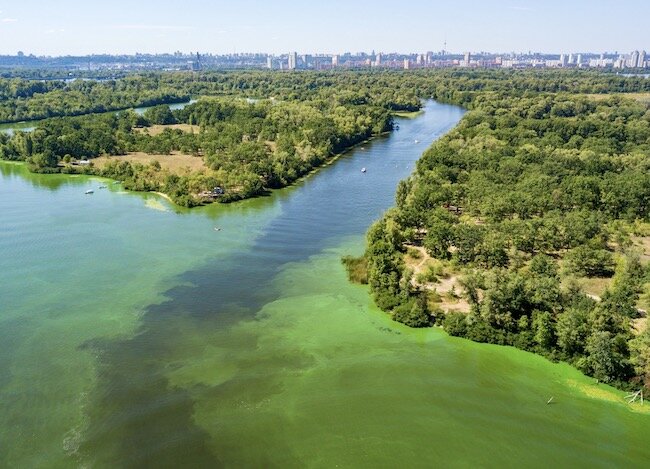Rivers throughout the world can be found in a variety of colours. Many factors can influence this natural phenomenon. Changes in a river’s flow, its sediment content and the amounts of organic substances it contains can all impact its hue. All of these factors are natural and part of a river’s life cycle. However, a recent entry from the journal Geographical Research Letters reports that one-third of rivers in the U.S.A. have changed colour considerably over the past 35 years. While most are becoming greener, some are trending towards purple, some red.
Although we imagine rivers to be blue, only 5% of river mileage in America is considered this colour. Increasing amounts of algae are evident in many rivers, turning the water green. Two-thirds of all rivers are yellow due to the amount of soil they contain. The study reports that the chief causes of colour changes are farm fertilizer run-off, dams, efforts to fight soil erosion and man-made climate change, which increases water temperature and rain-related run-off.
The study had access to 35 years worth of NASA satellite images of rivers and reservoirs. The findings have scientists both excited and anxious to learn more about this dramatic shift in river pigmentation. “The next step,” says lead study author and University of Pittsburg hydrologist John Gardner, “is to investigate what humans are doing to cause those changes and whether it's an improvement or degradation.”
